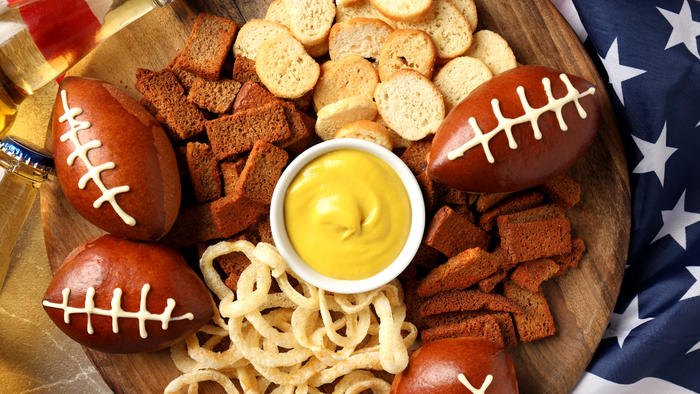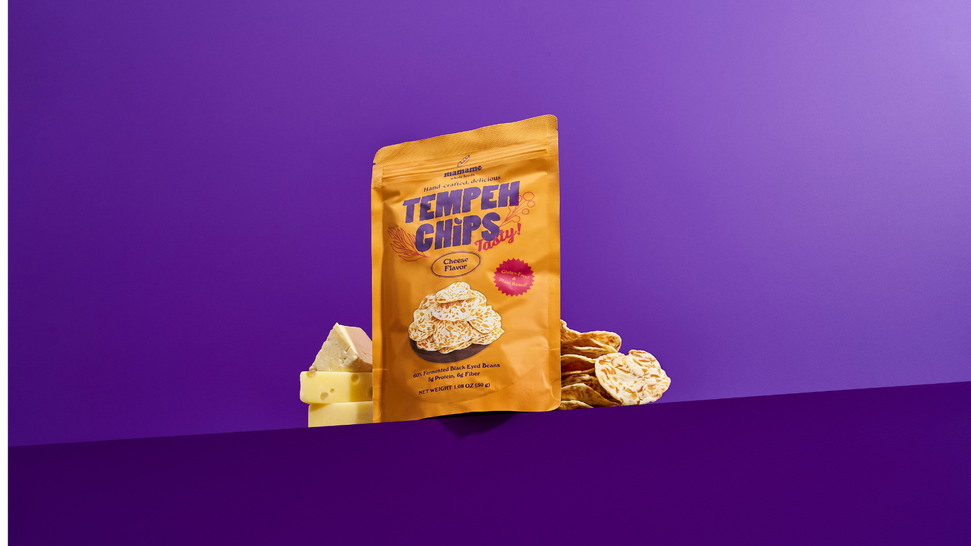Super Bowl snack boom: High protein and global flavors dominate the natural field
Super Bowl snacks score a touchdown with protein-packed options and bold international flavors such as Sichuan and gochujang, redefining the modern snack aisle.

At a Glance
- Snack aisles reflect rise of 'snackification nation.'
- Protein snacks including meat sticks and protein crackers are booming.
- Heritage flavors—Sichuan, gochujang and more—dominate new snack trends.
Prepared for the Snackocalypse yet? With Super Bowl LIX just nine days away, grocery aisles across the country dedicated to chips, popcorn, pretzels and the like are already beginning to feel like a South Florida Publix during a hurricane warning. By Sunday, these same aisles might broadcast some serious post-apocalyptic vibes.
Thanks to impressive innovation on the savory snack front, those Super Bowl-friendly boxes and bags stuffed with salty, crunchy things promise much more than the sour-cream-and-onion dusted potato chips of the recent past. Among other things, sales of protein-enriched snacks and products inspired by heritage foods have expanded during the past few years.
Products with one or both of these attributes were also easy to find among the 1,000+ entries to this year's NEXTY Awards. As a judge, I sampled every one of them.
This experience only helped drive home the notion that we are becoming a snackification nation. According to a Mondelēz’s recent State of Snacking report, six out of 10 consumers said they favor multiple meals throughout the day, instead of three larger ones. Another recent study, Circana’s Eating Patterns in America, also explored snackification, identifying it as a rising trend.
So, what are we snackers chomping, munching and scarfing down as we graze through our days? And why are protein-packed and heritage-inspired products rising to the top?
Protein-pumped snacking

CANVA
The sudden proliferation of high-protein snacks stands as the starkest evolution within the snack category. For generations snacks revolved around carbohydrates from grains. For the most part, people entered a protein-feeble zone when they sat down with a bag of pretzel sticks and watched another episode of Law & Order.
It’s much different today. Grocery shelves support chips made from protein-dense chicken breast—the brand Wilde is the OG there. And meat snacks are positively booming, too.
The meat stick segment alone grew by 24% last year—and one brand, Country Archer, achieved meat stick growth of 166% during the year, according to company CEO and co-founder Eugene Kang in an email.
But shoppers also encounter cracker brands trumpeting their protein bona fides. Popcorn fortified with protein sits on shelves, cheek-by-jowl with protein-enhanced corn chips. Increasingly, the snack shelves are turning into proteinpalooza.
“Our country is protein obsessed, far more than any other developed country,” said SPINS CEO Jay Margolis at Plant Based World Expo last year.
Consider: The global plant-based protein snacks category is anticipated to grow by 15.3% compound annual growth rate (CAGR). Yet the global snack market’s CAGR sits at between 3-6%. The figure showcases especially strong demand for protein-rich snacks.
The trend aligns with the desire for more nutrient-density among consumers. People want better-for-you frozen dinners and alt-milks, pasta sauces and even ice cream. And when they plow through a bag of something during the show they’re binging, they are also seeking snacks with benefits.
For brands, establishing products in the marketplace now makes good sense. For the time being, GLP-1 weight loss drugs are expensive—not everybody can take them to manage pounds. But the food industry understands those drugs will become more widespread as prices drop—and when they do, many more people will simply eat less.
Whatever they do consume will need to be more nutrient dense, given the diminished diet. And so, products that deliver protein, as well as vitamins, minerals and other healthy attributes could see heightened demand.
“While we are not experts in GLP1s, what we understand from the studies we’ve read is that consumers seek nutrient-dense foods when taking these medications and avoid your typical highly processed, sugary snacks,” says Kang. “Given that, we feel confident that Country Archer will fare well if GLP-1s continue to proliferate.”
Another brand, Milton’s, is launching a new SKU, Protein Crackers, into its line this spring.
“The launch of our Gluten Free Crackers back in 2014 followed by Gluten Free Cauliflower Crust Pizza in 2018 are both great examples of bringing impactful innovation to the market,” says Francey Grund, Milton’s vice president of marketing. “We are excited to debut the latest addition to our cracker portfolio.”
The decision to develop and launch a protein-rich cracker—each serving contains 10 grams of protein—“aligns with changing shopper preferences,” she says. “In looking at recent product launches and packaging updates, it’s evident there is a shift in focus to protein, which is no surprise.”
She referred to a recent survey by the International Food Information Council that found 71% of Americans want to increase their protein intake, and that 20% follow a high-protein diet.
Turning to heritage flavors

Mamame Whole Foods Tempeh Chips
Increasingly more snacks born out of cultures from around the world are also landing on grocers’ shelves. During NEXTY Award judging, we encountered chips made from ramen noodles. We nibbled a brand crafting blends of nuts and other ingredients shot through with Sichuan flavors. Gochujang almonds? Yes. In fact, gochujang and Sichuan figured into many of the competition submissions.
We encounter quite a bit of heritage flavors in brand collaborations, which have emerged as a force during the past few years. The brand Fly By Jing, which makes chili crisp hot sauces, stands as an especially active collaborator. Even a brand of tinned fish, Fishwife, has a Fly By Jing collaboration.
It’s not like heritage snacks are a new idea—after all, corn chips have muscled for market share for many decades. But today’s heritage snacks move beyond the crisp triangles we drag through bowls of pico de gallo and stack into nacho mountains.
Still, it is worth noting that the old-school heritage snack, the corn chip, drove recent headlines. This month, PepsiCo finalized its purchase of Siete Foods, a Mexican-American food company in Austin, TX with heritage-inspired products, for $1.2 billion. The big purchase reflects the movement toward heritage brands.
Perhaps that kind of category momentum will one day benefit MAMAME, a brand of chips made from tempeh. The brand, founded by Liz Kang, grew out of her experience growing up in Indonesia (among other places), where tempeh is as much a way of life as tortillas are in Mexico.
Tempeh, traditionally made from fermented soybeans, may even predate tofu. It's sold everywhere in Indonesia, where people have been eating it for centuries. During COVID-19, Kang and her mom—they run the company together—began figuring out how to create a shelf-stable tempeh product that they could bring to the global masses in the form of a snack.
“My mom started cooking (tempeh chips) in my kitchen, which in a year turned into making them in a certified factory,” says Kang. “Now we are in 10 global markets. The concept came from our love for [this ingredient], and our desire to introduce it to the rest of the world.”
In addition to flavor (the hot chili is the most popular) and texture (the chips are sturdy), MAMAME chips deliver a range of health advantages to snackers. Gut-friendly probiotics remain alive in tempeh, even after it’s cooked (or turned into chips). The beans—MAMAME uses black-eyed peas instead of soybeans, in part due to a better flavor for chips—contribute fiber, protein and other benefits.
“What we found, especially in Asia, where people are on the go a lot, they will use the tempeh chips as a meal replacement,” Kang says. “I think there’s a whole movement surrounding using snacks to sustain people through high-powered days.”
Today’s snack aisle has evolved rapidly—even gas station C-stores offer protein-packed chips and bold heritage flavors. As a lifelong and ambitious snacker, I’ll take it all. Bring on the protein popcorn brands. Infuse those potato chips with Sichuan peppercorn. Both will pair winningly with next Sunday’s Super Bowl.
Read more about:
Shelf LifeAbout the Author
You May Also Like





